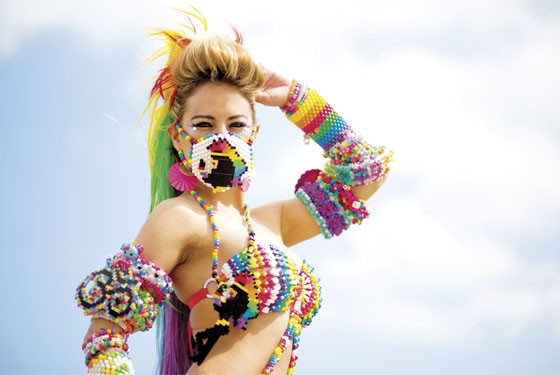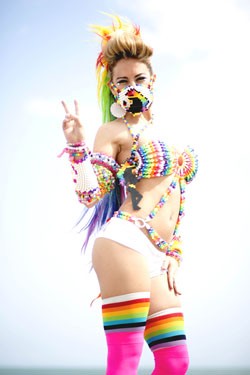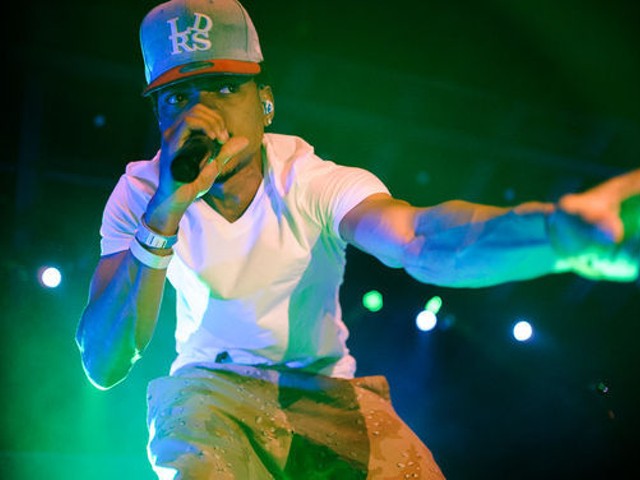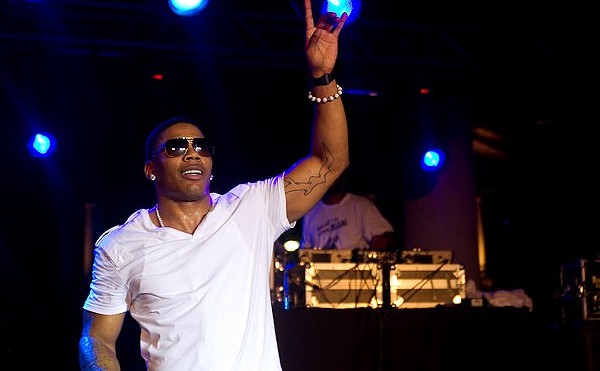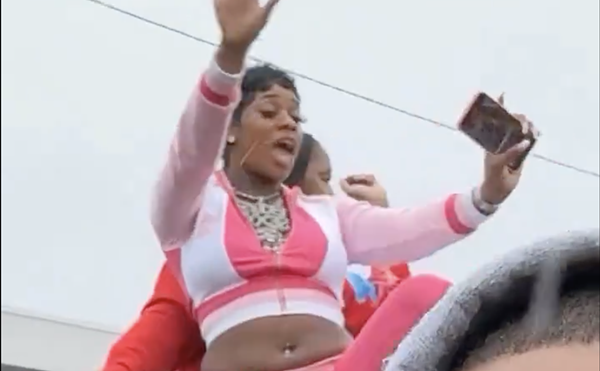By Ben Westhoff and Sarah Purkrabek
Lady Casa is perhaps the country's most famous raver, and something of a cult leader to her tens of thousands of fans. When the Miami native makes a pilgrimage to LA and hosts an event on Venice Beach the day after seeing DJ Armin van Buuren, it quickly turns into a mob scene.
Not far from the guy who walks on glass and an Italian tour group, hundreds of ravers wait for hours in a snaking line to get Lady Casa's autograph, hear her wisdom and, most importantly, hug her. The event is billed as her 26th birthday party, as well as a benefit for local animal shelters.
"I'm so nervous right now!" says an awkward twentysomething when he finally reaches the front. "You're awesome," she responds, writing a personalized note for him on a decal. She ends it, "Namaste, Lady Casa."
Lithe, pretty, with long, golden, Barbie-style hair, the woman born Michelle Casares wears a flower crown, scarf, leggings and sunglasses shaped like hearts, all of it a mishmash of bright colors.
At raves she might wear go-go boots, pasties, bracelets, a thong and a giant Native American headdress. Her signature logo, which she has applied to stickers and T-shirts, is a silhouette of this look. Some of her followers have it tattooed on them.
She does yoga. She protests Monsanto. She snuggles with ravers in "cuddle puddles." She preaches the ravers' gospel of PLUR — peace, love, unity, respect. She says things about herself in the third person that probably sound cool if you're high.
"Lady Casa is something bigger than me, an energy that can't be encompassed in one human body," she says now. "So if you're attracted to the symbol of Lady Casa, it's a reflection of you."
She resembles a hippie-chick-turned-go-go-dancer. In fact, until recently, she danced nearly naked atop platforms at South Beach megaclub Mansion. She's now looking for work dancing in her new home of Las Vegas, where she moved recently to be with her new boyfriend (who makes raver bracelets) and because she "felt a calling toward the West."
But she's long been an electronic dance music fan, having attended Miami's annual festival, Ultra, every year since she was twelve. Her mantra is "Reel 'em in with the boobs, keep 'em with the PLUR." She knows she can't be a dancer forever. She hopes to segue into a career as a full-time rave professional.
What might that entail? Well, in the long term she hopes to become a "meditative guide" or a "festival healer," but for now she sells raver gear such as $12 "PLUR Cheekies" — bootie shorts that display her silhouette (and much of the wearer's butt).
Today her handlers have dispensed boatloads of colorful beaded plastic bracelets known as kandi, and she has received enough back from fans to cover both arms from wrist to armpit. Kandi resembles starter jewelry for grade-schoolers, but it looks cool when you're rolling, and among ravers, it's art that represents a lifelong bond.
"How was Armin van Buuren?" the next girl in the line asks.
"Honestly, one of the best shows I've ever seen," Lady Casa responds. Their interaction ends like the others: a hug, a shadow kiss and a picture destined for Instagram, with the pair placing their two hands together to form a heart shape.
Lady Casa has 75,000 followers on that social-media platform, and largely owes her fame to it. Originally intending to be a physician's assistant, she quit her program at Nova Southeastern University in Fort Lauderdale and began dancing full-time in 2011. The next year, following a Miami show featuring megastar DJ Kaskade, she received a major boost when he posted to his Instagram a photo of her wearing body paint. "This girl just 1 up'd EVERYONE!!!" read the post, which received nearly 14,000 likes.
"That was really the catalyst to me being the iconic figure that I've become in the EDM community, and from that point on I took the role of raver more seriously," she says. She speaks like a well-educated Valley Girl, ending her sentences with upward inflections. "There were younger and older generations looking up to me."
Indeed, nowadays she can hardly dance at raves because she's so mobbed by her followers. Rather than idle chitchat, she imparts to them wisdom drawn from a mix of spiritual and self-help realms.
Her followers tend not to be the stereotypical thin, rich white girls you see at Coachella but rather multiracial and of all different body sizes. Though she grew up wealthy in Key Biscayne, Florida, her parents' divorce hurt her family's finances, and when her mother came out as gay, young Michelle was ostracized. "I pretty much lost all my friends," she says, which might explain why her message is one of inclusion.
While underground dance parties once drew a comparatively tight-knit, like-minded group, today's sprawling electronic dance music scene is centered around mega-raves hosted by giant corporations.
As the rave culture has entered the mainstream, its symbols and practices have been subjected to increasing scrutiny. Kandi has been banned at some events due to its drug associations, and white kids donning Native American garb has triggered an outcry. Most urgently, electronic music festivals have seen a rash of deaths in recent years, many drug-related.
It's added up to a public-relations nightmare for the rave community. Lady Casa hopes to turn things around with the help of her organization, the oxymoronically named PLUR Warriors. Part PR operation, part community-outreach program and part rave-gear emporium, it seeks to convince skeptics that ravers are a force for positive change, not a group of tweaked-out, underdressed hedonists.
Up next: The kandi crackdown.

